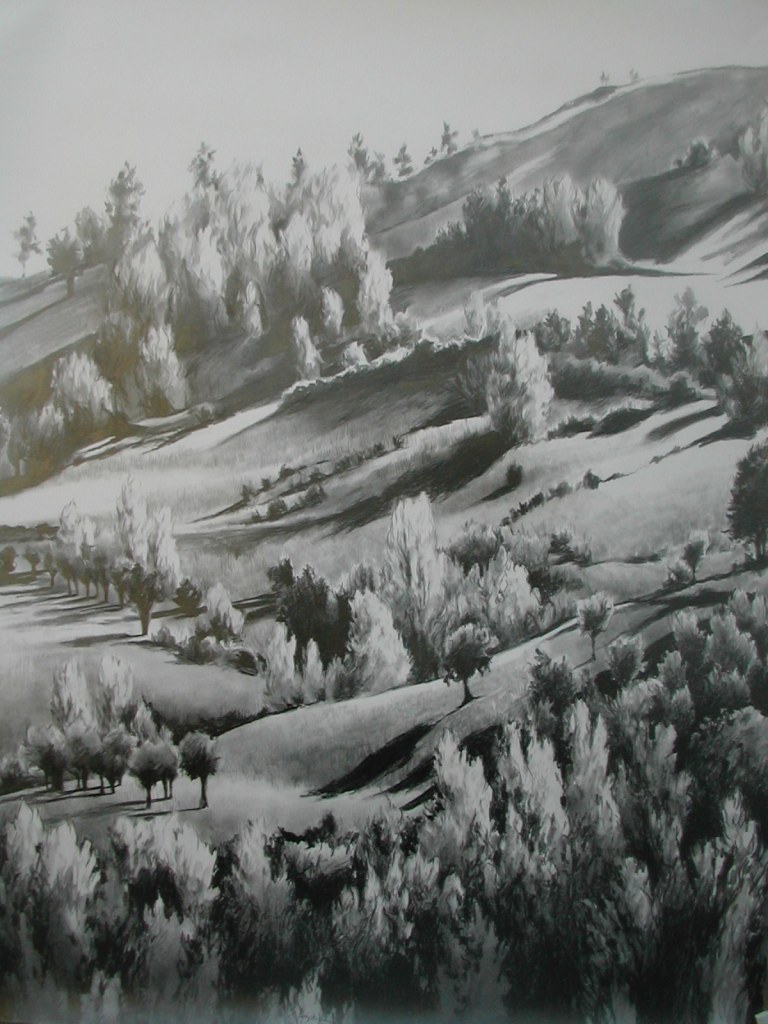“Vallata in bianco e nero” pencil on paper, 2005
We built our house on the edge of a gorge, or fosso, which hasn’t really changed its topology in thousands of years. How do I know this? The ground is strewn with bits and pieces of stone and ceramic, everything from tools to neolithic pottery to Greek black and red figure fragments. Concentrations of shards, roof tiles, and blackened areas filled with river stones still speak clearly of the habitations which once filled the countryside. At least until the advent of large tractors, which have reduced many of these sites to vague concentrations of smaller and smaller fragments, yet they are still identifiable. Down in the gorge below, an area where tractors are absent, there are deep trails through the woods which have been used for a thousand years by goatherds with their flocks, as they still are today.
Research has shown that the countryside hereabouts, from north of Pisticci to the sea, was divided up into parcels of a couple of acres per family. The town of Metapontum, founded in 800 BC, was the central hub for an extensive farming community, and the countryside was even more populated back then than it is now. The area was known as Magna Graecia and it was the breadbasket for the Greeks five hundred years before Christ. Wheat was the most popular emblem on coins of the time. They also used the extensive deciduous forests as a source of wood for their ships, and the barren hills still testify to overuse of this resource.
Before the Greeks there were indigenous populations, and before them there were paleolithic peoples who left stone tools and fragments from their creation. A friend who is an expert in the area tells me that some of the lithics that I have found are up to twenty thousand years old. I have a collection of them, and my favorite is a large, six-pound round river stone with thumb-sized twin indentations on opposite sides, used for cracking almonds or hazelnuts. I love to think that it has been migrating around the surface of the same field for ten thousand years, waiting for the day I stumbled upon it and moved it to its new, only temporary, home on my mantelpiece. I have a crude, potato-like elongated stone that was some kind of knife, and loads of chips and tiny sharp bits of stone, probably rejects from the day of their creation, as someone tried to learn the art of flintknapping around the fire. Each new plowing refreshes the possible finds, like a new set of numbers at the lottery. A rain will dissolve the clods of soil and leave smooth flints balanced on small pyramids like offerings. It is like a never-ending Easter egg hunt. Very few people around my area have any interest whatsoever in collecting stones, so I have them to myself and I suffer very little guilt about my prehistoric kleptomania.
